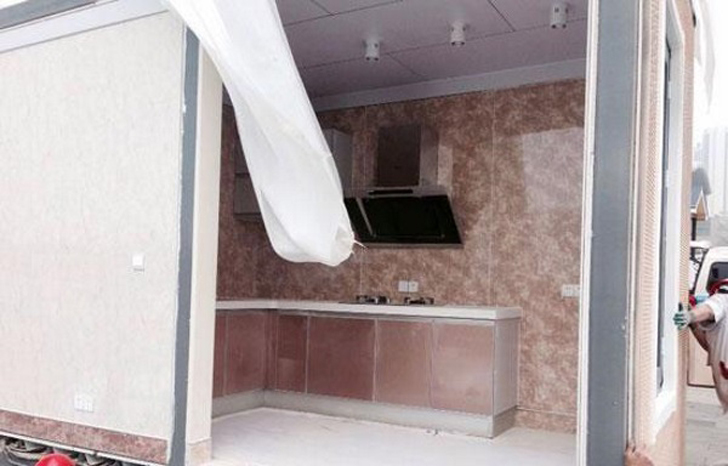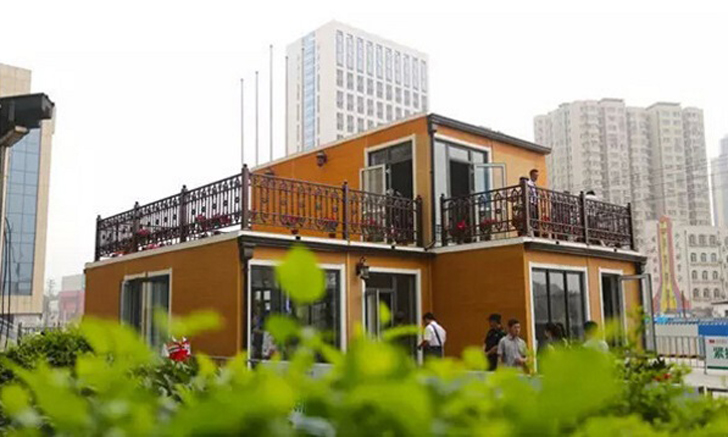House printing may still be a young industry, but Chinese companies are hoping to mature it really quickly. First, WinSun implemented the designs of USC’s Behrokh Khoshnevis to construct 10 houses in 24 hours, followed by a villa and an apartment complex, and are planning to 3D print an office building in Dubai. Now, ZhuoDa Group has constructed their own two-story villa in just three hours.
On July 17, the Chinese company unveiled their modular home at the International Exhibition Center Plaza in Weihai. Like the WinSun structures, this home was made off-site before being brought on location for complete assembly. 90% of the villa was built within a factory, in module form, where all of the essentials – wiring, plumbing, furniture, decoration, and more – were incorporated into each portion of the home.
Then, at the unveiling, the modules were stacked using a crane, with a bedroom, kitchen, and bathroom assembled on the first floor and a terrace, bedroom, and utility room stacked on top to create the second floor. This entire process lasted only three hours.
Zhuoda Group Vice President Tan BuYong said of the project, “Thanks to our special materials, our rate of assembling houses is really fast. Since 90% of the houses we build are completed in a factory prior to the actual on-site construction, we only need to do on-site follow-up work to complete a build. This not only avoids the pollution caused by traditional construction sites, but also dramatically reduces construction costs by thinking about houses as a traditional manufactured product.”
The company claims that the reduction in labor, transportation, material, machinery, and more can reduce the price of such builds, making them ultimately cheaper for the client. The material mentioned, Tan says, are made from industrial and agricultural waste, but also meet a lot of important requirements for construction: they are fire and waterproof, lack any harmful substances (like formaldehyde, ammonia, radon, and more), and, even, the ability to withstand magnitude 9 earthquakes. The company also suggests that it can incorporate such features as jade, marble, wood, and more, as well as the possibility of infusing the walls with Chinese herbs for aromatherapy, though exactly how is not yet clear. Zhuoda Group R&D engineer An Yongliang adds, “The traditional villa can take at least six months to construct, but our 3D module villas take just ten days from the beginning of production in our factory to the final assembly at a specific build site.”
With each module weighing about 100kg (220 pounds) per square meter, the company estimates the cost of the construction to be only about $564 per square meter. As a result, Zhouda Group has already signed contracts with more than 40 local government projects and believes that they will be able to hit a production capacity of 2 billion square meters, valued at over a trillion dollars by next year.
After WinSun originally unveiled their amazing structures, there was a great deal of speculation about how their construction process, as no footage was publicized about the 3D printing of each component. Additionally, we later learned that their technology may have directly been taken from Prof. Khoshnevis’s own designs, which feature a quick-drying cement. So, in the case of Zhouda’s two-story home, a bit of skepticism may be healthy, as details about the actual printing process and materials are under wraps. That being said, the ability to 3D print individual building components and then assembling them and applying traditional building materials is definitely not out of the question. The jade and wood mentioned by Zhouda may be made with ordinary processes and put into the modules after they are fabricated. Moreover, the actual time to print the modules has not been made clear.







